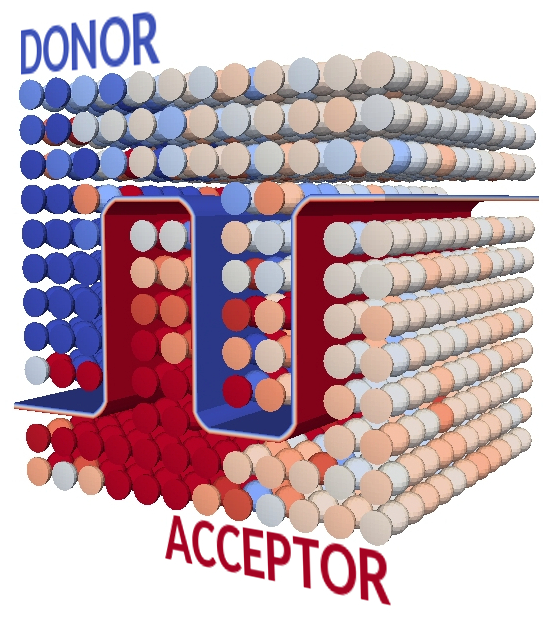
Organic electronics is a branch of modern electronics, which focuses on the application of organic materials, in the development of electronic devices, such as organic solar cells (OSCS) and organic light emitting diodes (OLEDs). Semiconducting organic materials, like polymers or small molecules, can be processed into devices from solution, and provide a flexible and cheap alternative to conventional silicon-based technologies.
At the same time, the solid state organization of organic materials, based on weak intermolecular interactions, must be carefully controlled in order to maximize device performance. Tiny differences in molecular packing may indeed have a deep impact on the transport of charge carriers from one molecule to another.
A detailed characterization of these processes, which occur at the molecular scale, requires the integration of experimental and computational techniques. In our group this integration is realized through the combination of X-ray diffraction techniques and computational methods, either quantum-mechanical or classical, such as molecular dynamics.
People involved:
Guido Raos, Mosè Casalegno, Antonino Famulari, Stefano V. Meille.
Recent Publications:
1) A. Baggioli, M. Casalegno, G. Raos, L. Muccioli, S. Orlandi, C. Zannoni, Atomistic Simulation of Phase Transitions and Charge Mobility for the Organic Semiconductor Ph-BTBT-C10, Chem. Mater., 31, 7092-7103 (2019).
2) M. Casalegno, T. Nicolini, A. Famulari, G. Raos, R. Po, S. V. Meille, Atomistic modelling of entropy driven phase transitions between different crystal modifications in polymers: the case of poly(3-alkylthiophenes), Phys. Chem. Chem. Phys., 20, 28984-28989 (2018).
3) M. Casalegno, R. Pastore, J. Idé, R. Po, G. Raos, Origin of charge separation at organic photovoltaic heterojunctions: a mesoscale quantum mechanical view, J. Phys. Chem. C, 121, 16693-16701 (2017).
4) J. Idé, D. Fazzi, M. Casalegno, S. V. Meille, G. Raos, Electron transport in crystalline PCBM-like fullerene derivatives: a comparative computational study, J. Mat. Chem. C, 2, 7313-7325 (2014).
